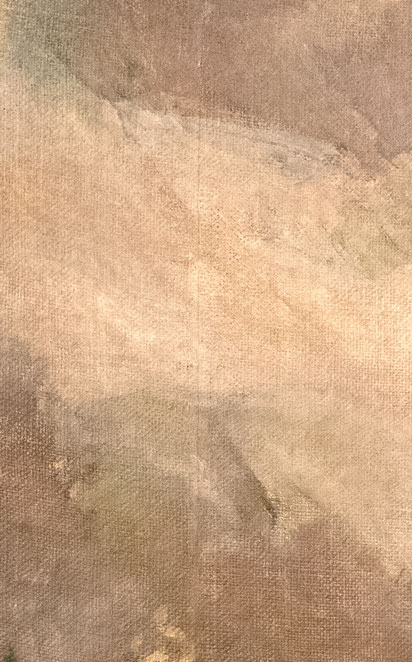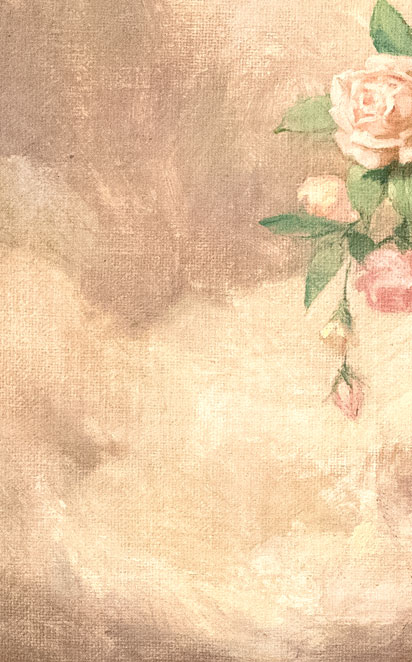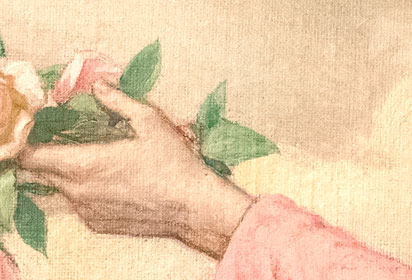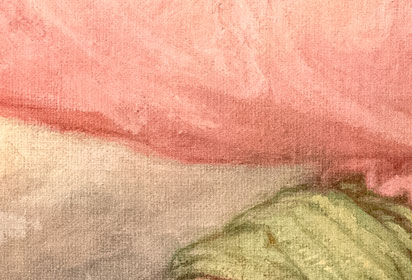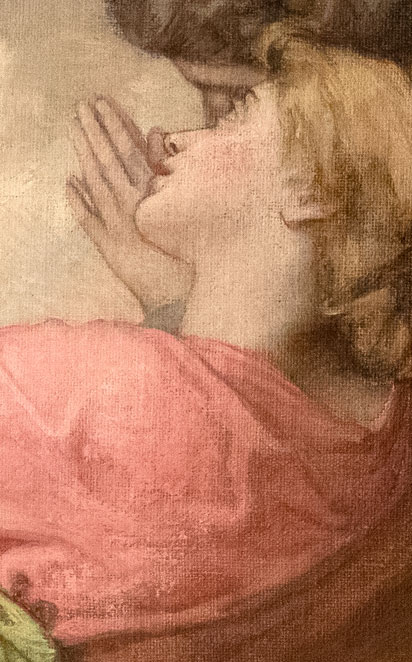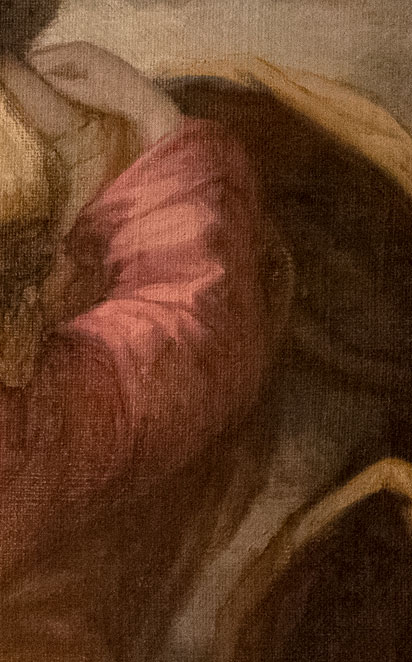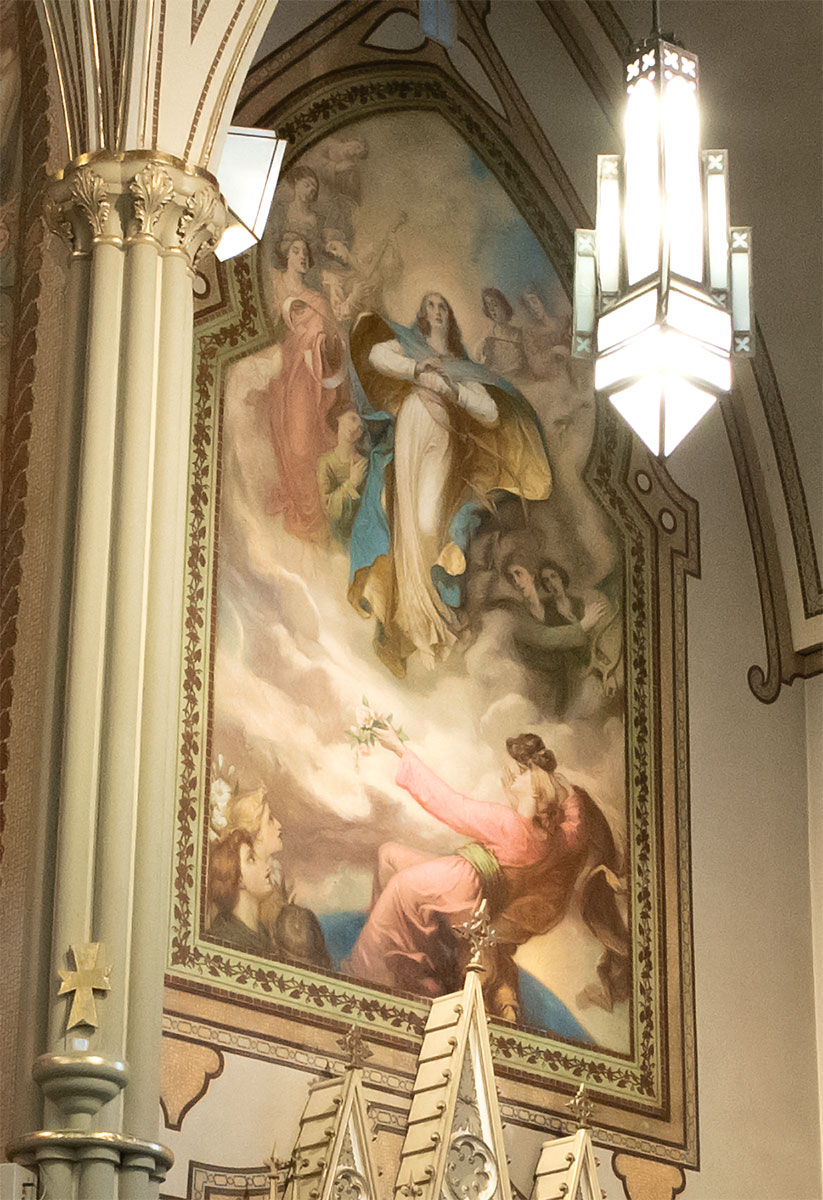Religious subjects
A stylistic synthesis
Very early on, religious art takes an important place in Ozias Leduc's production. Throughout his career, he receives commissions for the decoration of churches in Quebec, Nova Scotia and New England. Among his surviving works, stand out the church of Saint-Hilaire (1896-1899), the baptistery of the Notre-Dame Basilica in Montreal (1927-1930), the private chapel of the archbishop of Sherbrooke (1922-1932) and Notre-Dame-de-la-Presentation church in Shawinigan (1943-1955).
Throughout his projects, Leduc creates a synthesis between religious themes, places and social realities of his era by integrating local landscapes and workers. Religious figures seem more human, closer to us. He regularly uses models as the basis for the depiction of angels and saints. His sister Ozéma posed as the Virgin in The Asumption (1898), located in the church of Saint-Hilaire. In this painting, the focal point is the haloed and illuminated face of the Virgin Mary. Surrounded by angelic musicians, she is guided by figures carrying lilies, a sign of her virginity. She rises above the Earth, represented by a bluish sphere. After 1916, he gradually stops painting symbolic attributes and conventional ornementations.
Leduc and the clergy
Commentary by Louise Vigneault, Associate Professor at the University of Montreal, Faculty of Arts and Sciences - Department of Art History and Film Studies
Download in WebM format (1,2 Mb)
Download in MP4 format (17,4 Mb)



